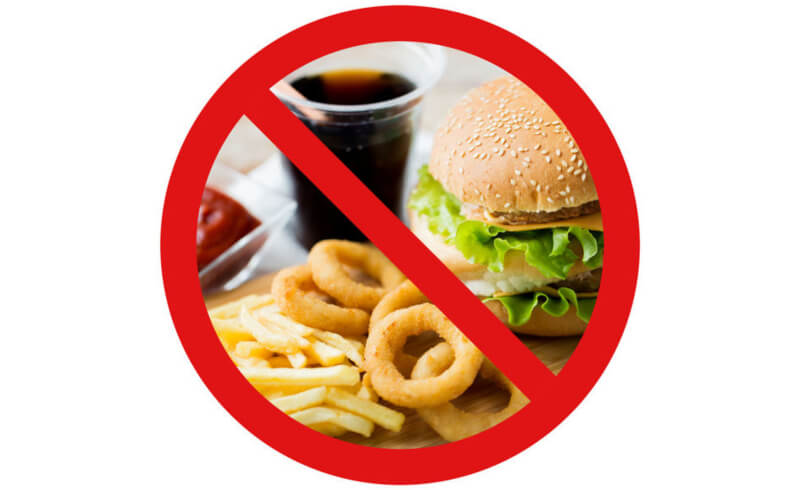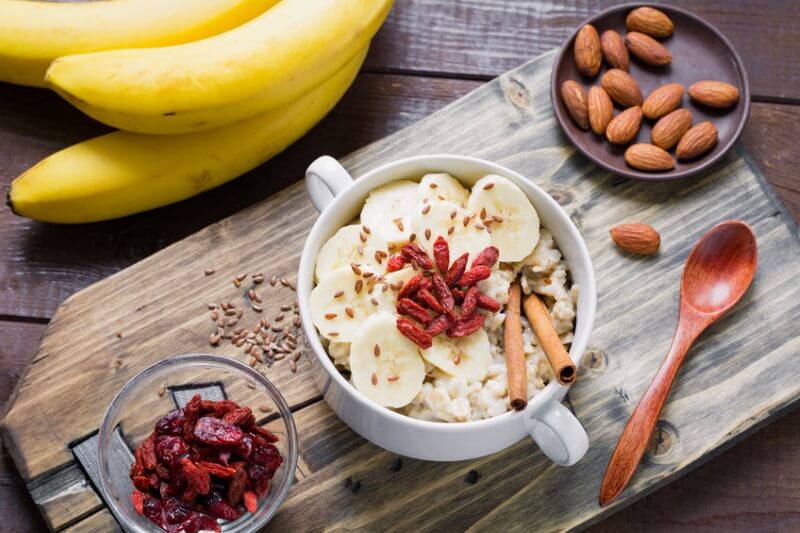Breakfast has always been hailed as the most important meal of the day. Turns out this old adage is nothing short of true, especially for acid reflux sufferers. Filling up the stomach with good food can prevent acid attacks throughout the day and alleviate symptoms of acid reflux.
What kind of breakfast foods are suitable for people with acid reflux? The idea is to eat alkaline foods that won’t contribute to or trigger reflux symptoms. This includes oatmeals, select fruits and vegetables, as well as lean protein.
Distinguishing good and bad food for acid reflux is the key ingredient to starting your day right.
Signs You Have Acid Reflux
Burping? Constipation? Stomach cramps? You might think you’re just experiencing morning hunger pangs when you’re actually experiencing acid reflux.
Acid reflux is a common disorder that happens when a muscle called the lower esophageal sphincter (LES) fails to seal in stomach juices. When the LES relaxes or malfunctions, stomach acid can move back up the esophagus, causing burning in the throat accompanied by a sour taste.
Other signs of acid reflux include:
- Nausea
- Burping and hiccups
- Bloating
- Regurgitation; tasting bitter or sour-tasting acid with every burp
- Bad breath
- Chest pain
- Burning sensation on chest
Read more: How to Treat Bad Breath from Acid Reflux?
How Can Food Trigger Acid Reflux?
Although there is no clear proof that certain food groups can cause acid reflux, it is known that specific foods can trigger or aggravate existing symptoms.
Food can be used to minimize the acidity of stomach contents by adjusting the diet accordingly. Some foods can even cause the LES to relax, which could worsen the regurgitation of stomach acids.
6 Breakfast No-Nos: What to Avoid

1. Foods with high fat content
Studies show that people who consume food with high levels of cholesterol and saturated fat are likelier to experience acid reflux symptoms (source). Fatty foods take longer to break down than their healthier counterparts. The stomach is forced to produce more acid in order to properly digest these foods, leading to heartburn.
Foods considered high in fat include anything deep fried. Ham, bacon, french fries, onion rings, and just about anything dripping with oil are clear examples of foods to avoid when experiencing acid reflux.
2. Caffeine
Caffeine, both in coffee and energy drinks, should be avoided by acid reflux sufferers. Caffeine is known to relax the LES, causing acid reflux, but this varies depending on a person’s digestive tract. High amounts of caffeine also translate to higher acidity, which can further aggravate an already irritated digestive system.
However, it’s still possible to enjoy a cup of coffee in the morning without inducing heartburn. For starters, you could look into coffee options that have a lower caffeine content such as decaffeinated coffee and a latte.
Opting for low-caffeine drink alternatives such as tea is also a viable breakfast option. Note that some teas are actually acidic in nature. Mint-based may exacerbate reflux symptoms.
3. Spicy foods
Spicy foods are included on the National Institute of Diabetes and Digestive and Kidney Diseases list of foods that worsen acid reflux. Spicy foods are known to act as irritants that may decrease LES functionality, leading to heartburn. These also encourage the production of stomach acid, which doesn’t help an already passive LES.
4. Chocolate
Chocolate contains certain components that irritate the stomach such as caffeine, theobromine, and methylxanthine. Its primary ingredient, cocoa powder, is also acidic in nature. On the other hand, some chocolates may be more accommodating to a sensitive stomach; dark chocolate has a lower acidity level than full-fat chocolate.
5. Acidic fruits, vegetables, and condiments
While fruits and vegetables are generally recommended to any diet, acid reflux sufferers should be wary about consuming too much of certain foods. These include oranges, grapefruits, lemons, limes, tomatoes, pineapple, and any other food that is high in acidity.
By-products of these fruits and vegetables, including lemoned, pure fruit juices, and salsa, should be consumed in moderation or avoided altogether.
6. Skipping the Most Important Meal of the Day
The act of eating breakfast alone is known to help manage chronic acid reflux. By eating something in the morning, acid reflux sufferers give their empty stomachs something to digest. Instead of travelling up the esophagus, the acids can work on healthy breakfast food, reducing feelings of constipation and stomach cramps.
Eating early in the morning can also calm the stomach and prevent symptoms throughout the day. On the other hand, skipping breakfast is known to both induce and worsen acid reflux symptoms.
Top Breakfast Foods For Fighting Acid Reflux

Planning meals may feel more challenging when eating with acid reflux sufferers. However, there are still food options available for people with even the most sensitive of stomachs:
Alkaline Fruits and Vegetables
Apples, bananas, coconuts, apricots, avocados, pears, and blueberries are examples of alkaline fruits. Swap out acidic fruits for these and add them as toppers for your cereal, oatmeal, or pancake.
Potato, squash, and zucchini are among the breakfast-friendly, alkaline vegetables. Mash and bake these vegetables together to make healthy tater tots.
Oatmeal
Oatmeal is an amazing powerfood with little to no acidic content. Oatmeal keeps you fuller for longer, is easy to digest, and is incredibly nutritious. Mix in a cup of almond milk or half a cup of skim milk for added flavor. Add in low-acid fruits such as apples and bananas to make your oatmeal a little more special.
Ginger
Ginger boasts of anti-inflammatory properties that can improve food digestion and prevent post-meal acid reflux. Swap out your morning coffee and tea for steeped ginger tea. Top off with a spoon of honey.
Leafy Greens
Vegetables such as spinach, lettuce, and kale can be transformed into a healthy breakfast meal. Toss a boiled egg and some chicken bits with some shredded lettuce to make a delicious breakfast salad. Spinach and kale can be chopped, along with mushrooms and peas, for a yummy morning omelette. Leafy greens are low-acid, high-volume foods that will help neutralize acid in the stomach.
Chicken and turkey
Lean protein such as chicken and turkey make great breakfast meals. Use ground pork or turkey to make breakfast meatballs, nuggets, and strips to enjoy every morning. To keep lean meat safe for acid reflux sufferers, consider baking them in an oven instead of tossing them in a frying pan.
Almond or Soy Milk
Cereal, oatmeal, and breakfast muffins don’t have to be boring. Adding a splash of almond milk or soy milk can take breakfast to a whole new level. Take note that not all nut-based milk have the same pH. Cashew milk, for instance, is considered an acid-forming food, and may induce acid reflux at breakfast.
Breakfast Ideas For Acid Reflux
| Day 1 | Day 2 | Day 3 | Day 4 | Day 5 | Day 6 | Day 7 |
| 1 plain bagel | 1 ripe banana | 1 boiled egg | 1 serving of omelette with mushrooms and spinach | Bowl of smoothie consisting of blended apricot, pear, and banana | 1 slice of toasted bread, unbuttered | 1 piece of apple |
| 1 tablespoon of low-fat cream cheese | Bowl of cereal with almond milk | 5 pieces medium-sized homemade chicken nuggets | 1 cup of ginger tea with 2 tsp honey | 1 granola bar | 1 serving of omelette with mushroom and spinach | Bowl of hot oatmeal with almond milk and 2 tsp honey |
| Glass of almond milk | Bowl of peeled pears and apricots | Bowl of white or brown rice | 1 piece of apple | Glass of almond milk | 1 cup of ginger tea | Glass of chocolate soy milk |
Breakfast Recipes for Acid Reflux
Dairy-Free Pancake

Ingredients:
- 1 cup of all-purpose flour
- 2 teaspoons baking powder
- 1 cup unsweetened almond milk
- 1 large egg
- 1 large egg yolk
- 1 ½ teaspoons canola oil
- 2 tablespoons sugar
- 1 can spray cooking oil
Instructions:
- Add wet ingredients and dry ingredients alternately. Keep mixing until all contents are incorporated
- Spray pan with oil then pour mix
- Cook until soft brown or no bubbles are showing
Omelette

Ingredients:
- 2 large eggs
- Minced mushrooms (or any other alkaline vegetable)
- Diced spinach (or any other leafy green)
- Salt and pepper to taste
Instructions
- Whisk both eggs onto a bowl, then add vegetables. You may also choose to brown the vegetables for 5 minutes before adding them to the egg mixture
- Heat oil in a pan
- Pour mix and wait for the omelette to form
No-Bake Faux Banana Bread

Ingredients:
- 4 large ripe bananas
- 1 large egg
- 2 tsp honey (optional)
- 1 can spray oil
- 1 tbsp cinnamon powder
Instructions:
- Mash ripe bananas onto a bowl, then add egg. Whisk together. Add cinnamon powder and honey
- Spray pan with oil
- Pour mix onto the pan and wait for it to form
Tater Tots

Ingredients:
- ¼ cup carrots
- ¼ cup sweet potato
- ¼ squash
- 1 tablespoon flour
- Salt and pepper to taste
Instructions:
- Preheat oven to 450 degrees Fahrenheit
- Peel and boil carrots, sweet potato, and squash. When soft, drain, and shred
- Mix vegetables with flour, salt, and pepper
- Form into small balls and bake for 20 minutes or until golden brown
Making Breakfast Easy: 5 Tips For Acid Reflux Sufferers
Tip #1: Keep a Food Diary. Not all foods create the same reactions in people. Experiment with certain foods and see which ones aggravate your symptoms. Knowing how certain breakfast foods interact with your stomach makes it easier to plan meals in the future.
Tip #2: Don’t Lie Down Immediately After Eating. Go for a walk or sit up and use the computer. Lying down can cause indigestion, which can make acid reflux worse.
Tip #3: Take Antacids. Over-the-counter antacids are available to help keep acid attacks at bay. Take a recommended dose after eating breakfast to prevent stomach contents from travelling up the esophagus.
Tip #4: Eat Less, More Frequently. Overeating is a trigger of acid reflux. Eating less more frequently can prevent a sensitive digestive system from producing too much stomach acid at a time. Eat small snacks in-between meals or divide a big breakfast into two smaller servings/
Tip #5: Look For Alternatives. Are there certain breakfast staples you can’t do without? It’s still possible to enjoy them by identifying key ingredients that make the food acidic. Craving for french toast? Swap full-fat milk with skim milk or soy milk. Skip the butter and use coconut oil instead.
Eating the right kind of breakfast is just one way patients can keep acid reflux under control. Get in touch with us to learn more about acid reflux, both chronic and short-term, and how to deal with these accordingly.
